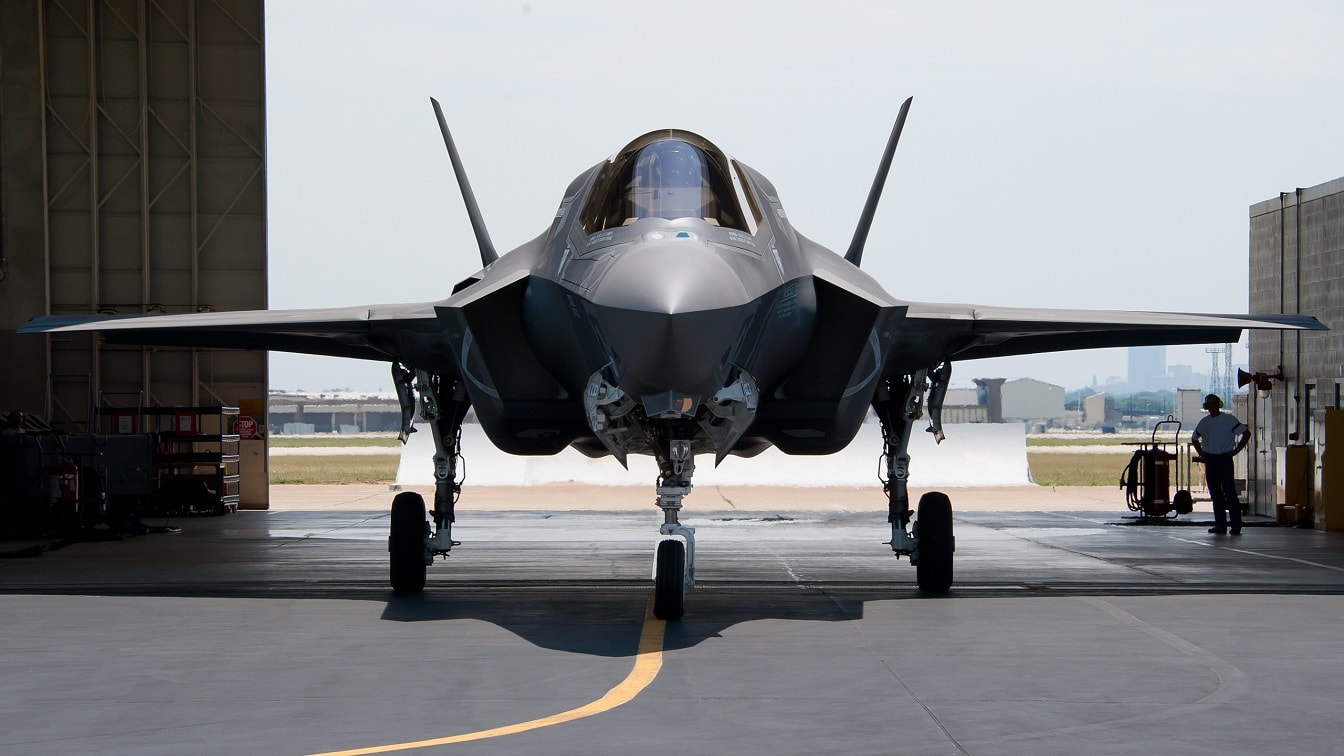F-35 Will Be In Business With a New Missile – The F-35 is getting a boost with a new air-to-ground missile that would result in a global strike “Day One” option in a potential attack against targets that would better clear enemy defenses. This asset is meant to foster air superiority in the first 24 to 48 hours of a conflict.
The missile will build on the F-35’s ability to evade radar and maneuver through surface-to-air missile systems. Known as the stand-in attack weapon, the missile would be paired with longer-range stand-off weapons that could be fired from outside SAM range by B-52s or the new stealth B-21 Raider bomber.
Three Initial Contracts Awarded
Three companies are receiving contracts and funds to get the stand-in attack weapon off the ground. Lockheed Martin, Northrop Grumman, and L3Harris Technologies won the bids and are receiving $2 million each for phase one development, an Air Force acquisition spokeswoman announced June 8.
High Speeds, Heavy Warhead
This is going to be the first fully-digitally designed program the Air Force has embarked on. The contractors will be working on the initial design. The missile will have a new, more powerful warhead and achieve speeds not seen with other missiles in the Air Force arsenal.
Designed to be an Agile, Fully-Funded Program
The service branch is ready to sink substantial funds into the program after this initial spadework is complete in the next 90 days. Over the next five years, the Air Force has budgeted $1.9 billion for the stand-in attack weapon.
The Air Force will “decide on seekers, motors, internal warheads, internal parts to the weapon, and as the threat changes, we’re able to change those parts of the weapons,” according to Air Force Magazine.
Area Denial Is the Name of the Game
The stand-in attack weapon gives the Air Force an intriguing capability to first deny the enemy from operating in a battle space it prefers. Once the F-35 gets close to its targets, the missile can eliminate SAM sites, enemy missile launchers, command and control centers, radar installations, and systems that could kill a friendly satellite.
War in Ukraine Shows Ground Attack Precision Missiles Are Paramount
The U.S. military has enjoyed air dominance in the Middle East and South Asia since 9/11, but recent aerial combat in the war over Ukraine has shown one side or the other cannot always assume air superiority. So, an offensive strategy must now prepare for contested air space with enemy ground assets setting up a difficult array of defenses. Missiles are also becoming more important based on action in the Russo-Ukraine war.
It’s All Part of a Plan
That’s where this new missile comes in. Precision-guided munitions must eliminate air defense systems on the first day of conflict to rapidly degrade enemy capabilities. This paves the way for the heavy-hitting bombers that can stay out of range to fire stand-off missiles, or in the B-21’s case, fly in after the F-35s for closer-range land-attack bombing on Day Two, Three, and Four. So, the Air Force is building plans to have on-the-shelf attack parameters before the conflict starts to give the President, the Secretary of Defense, and the Joint Chiefs options if a crisis occurs in Europe or in the Indo-Pacific.
Could the Navy Get It Too?
It’s not clear if the stand-in attack weapon could go after naval targets, but that is within the realm of possibility and could equip naval carrier-based F-35Cs to employ the missile.
This is the type of weapons development that appears to be driven by overall military strategy and that’s a refreshing way to conduct an acquisition program. The stand-in attack weapon, should it succeed in the coming years, will plug a significant capability gap for aerial combat.
Now serving as 1945’s Defense and National Security Editor, Brent M. Eastwood, PhD, is the author of Humans, Machines, and Data: Future Trends in Warfare. He is an Emerging Threats expert and former U.S. Army Infantry officer. You can follow him on Twitter @BMEastwood.

